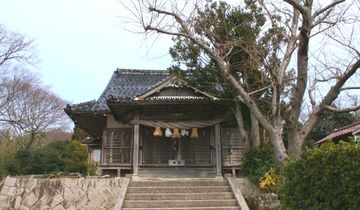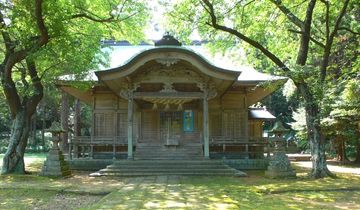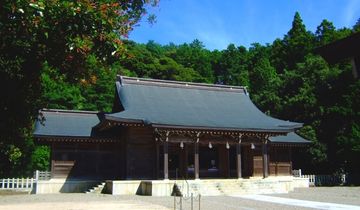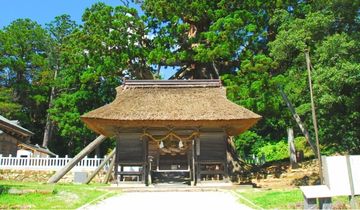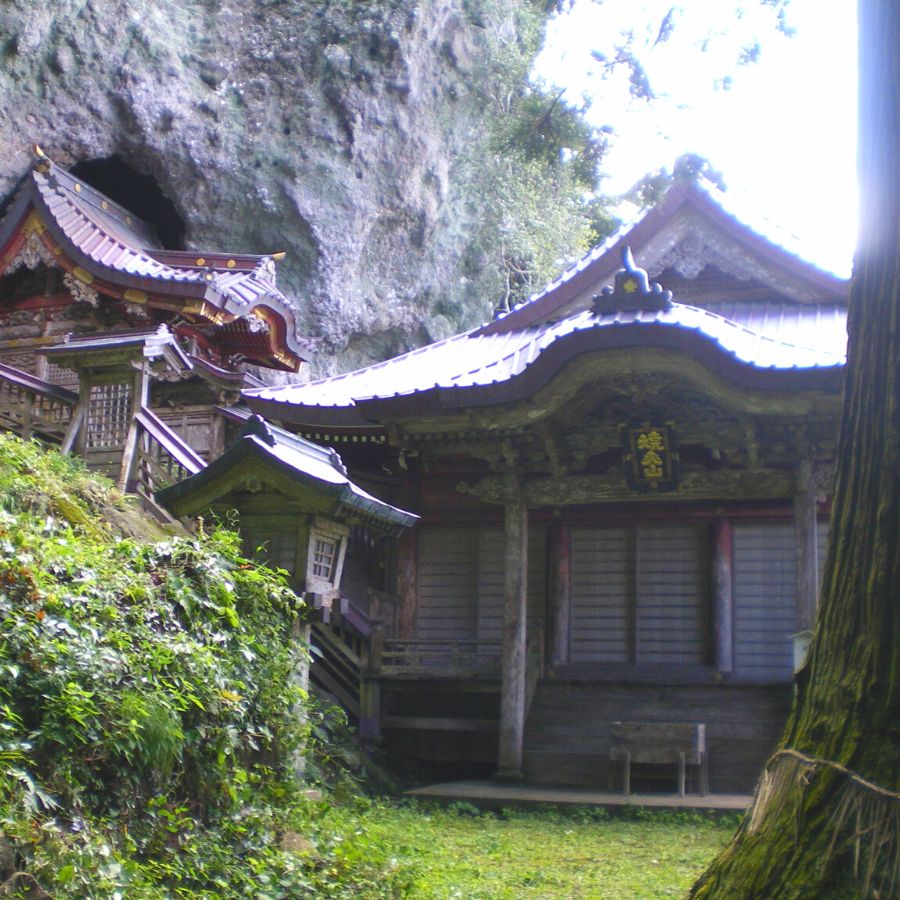
Lifestyles and Traditions - Shrines
Ōhirume no Muchi is Amaterasu Ōmikami, the child of Izanagi-no-Mikoto and the ruler of Takamanohara (the "Plain of High Heaven"). The deity has also been worshiped as the guardian of safe sea travels by seafarers of the Sea of Japan. It is said that the deity would send sacred flames to save ships from distress, when prayers are dedicated. During the days of kitamaebune trading ships, subordinate shrines of Takuhi Gongen were placed in various places as the guardian deity for marine safety; therefore, not only is the deity worshiped along the coast of the Sea of Japan, but also by those who live by the Pacific coast of the Tōhoku region up to this day.
Furthermore, Takuhi Gongen was also featured in many woodblock prints as the famous site of Oki in "One Hundred Famous Views of the Provinces," created by Ando Hiroshige, Katsushika Hokusai, and others.
The shrine building is said to be the oldest in the Oki Islands as it was rebuilt in 1732, and is designated as an Important Cultural Property of Japan. It was built in Osaka and assembled at the site by carpenters from Yonago, a groundbreaking construction method back in those days. According to the book of origin of the shrine, during the reign of Emperor Ichijō (986–1011), from the night of the 31st day of the twelfth month of the lunar calendar, night after night, a strange fire continued to burn in the sea. The fire flew out of the sea and into the mountains. The locals who saw followed it, and while they were climbing the mountain, they saw the fire stayed at a towering rock. The locals then built a small hall and enshrined the fire there, which was the origin of the shrine.
In the Kamakura period (1185–1333), when Emperor Go-Toba was exiled to the Oki Islands in 1221, it was dark at night and his boat could not find its port. After the helmsman prayed, the sacred fire appeared immediately and brought the boat to shore safely. Guided by the helmsman, the retired emperor then visited the shrine, dedicated a statue of the Yakushi Buddha, renamed the mountain from Ōyama to Mt. Takuhi, and named the shrine Unjō-ji Temple.
The red emblem of Oki Kisen Co., Ltd. is in the shape of the sacred fire of Takuhi Shrine (some also say it is from the family emblem of the Matsuura family, the chief priest of Takuhi Shrine). When the ferries of Oki Kisen pass in front of Mount Takuhi, they will always sound their horn as a salute to the deity of Takuhi Shrine.
There is a tradition that each of the areas of the three Dōzen Islands chooses a day for their New Year shrine visit, starting from the fifth day of the Lunar New Year. The grand festival is held on the two days of July 23 and 24.


